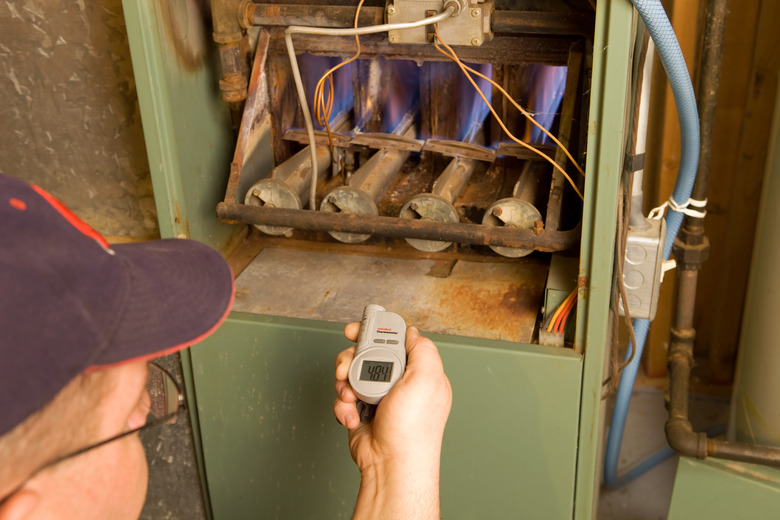Why Is My Furnace Flame Burning Yellow?
We may receive a commission on purchases made from links.
You probably don't think much about your furnace as long as it's heating your home well. But checking in on your furnace periodically in addition to annual maintenance can help you spot a problem early. The color of your furnace flame can be a warning sign of an issue, especially if it's yellow.
What Furnace Flame Colors Mean
What Furnace Flame Colors Mean
The flame color in your furnace can tell you how efficient the fuel combustion is in your HVAC system. The color can change based on what's in the gas, including contaminants, the oxygen levels, and the heat of the flame. Furnace flames can be blue, yellow, or orange depending on the efficiency of the combustion process.
Ideal Furnace Flame Color
Ideal Furnace Flame Color
Your goal is to have a strong, almost completely blue flame in your furnace, which is the hottest flame color. Look toward the center of the flame for a light blue triangle to show correct combustion. The flame is also good if it's mostly blue with a small sliver of yellow in it. You'll get a blue flame when your gas is clean with the right amount of oxygen for proper combustion with very little moisture or contaminants.
Causes of a Yellow Flame
Causes of a Yellow Flame
Yellow furnace flames happen with incomplete or inefficient combustion and can indicate that your furnace is not currently operating safely or efficiently. This usually happens if the furnace is dirty, especially the burner or heat exchanger. The dirt can prevent the gas and oxygen from mixing properly, which can affect the flame. Yellow flames can also be caused by contaminants or moisture in your fuel. In some cases, the yellow flames mean the furnace is old and needs to be replaced.
Incomplete combustion indicated by yellow flames does more than make your furnace inefficient. It creates carbon monoxide, which is a potentially deadly situation. The odorless, tasteless, colorless gas can cause flulike symptoms initially, but it can eventually kill you. You need carbon monoxide detectors on each level of your home to protect your family from this danger.
Other Signs of a Problem
Other Signs of a Problem
You might notice other signs that support your suspicions of inefficient combustion. Some signs include:
- Excess soot.
- Elevated carbon monoxide levels as indicated by your carbon monoxide detector.
- Erratic or flickering flames.
- Higher utility bills.
- Vapor buildup inside your home.
What to Do
What to Do
Calling an HVAC professional is the safest option if you notice the furnace flame is yellow. The technician can figure out what's causing the yellow flames and can fix it for you. This might be as simple as cleaning the furnace, or it could mean recommending a new furnace. Working with gas is dangerous, so it's best to let an experienced professional diagnose the problem and handle the repairs.
